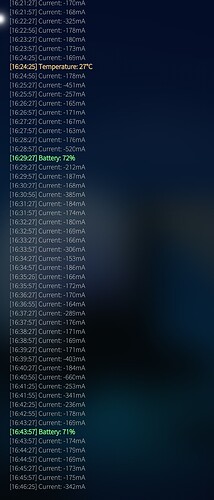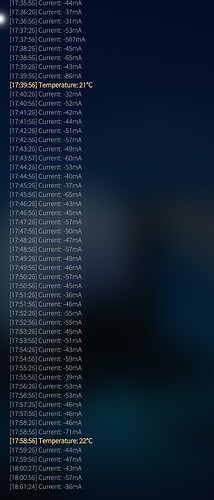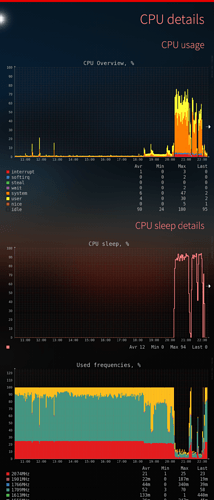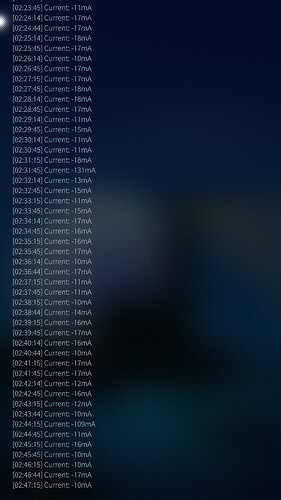REPRODUCIBILITY: 100%
OS VERSION: 4.5.0.24
HARDWARE: 10 III
UI LANGUAGE: English, Polish
REGRESSION:
DESCRIPTION:
When the phone uses 4G network, it never* goes to sleep. Power consumption never* drops below some 160-400 mA (and more). This happens as soon as 4G network is in use, regardless of whether “4G calling” aka VoLTE or mobile data transmission is enabled or not.
Compared to this, when the phone is switched to “2G only” mode and uses 2G or 2.5G (aka EDGE) network, its normal power consumption is at 110-120 mA, and as soon as the device is not used it enters idle/sleep mode in which it instantly reduces power consumption to 30-50 mA.
Whereas in “4G preferred” mode and with 4G network being used, something prevents the device from EVER* entering any kind of sleep and reducing power consumption, causing that 160-400 mA (and more) is being drawn PERMANENTLY.
Even without this issue, 10 III’s power consumption was really high (2-3 times higher than that of the XA2 Ultra) but this additional power drain issue on 4G network reduces battery life to less than one day.
There are no processes taking any increased CPU time, which might be responsible for such enormous permanent power draw, so it must be drawn directly by radio hardware.
I’ve reflashed the device, tested it with a freshly installed OS without any modifications, even tested earlier (4.4.x.x) OS versions - same problem. Exclusively on 4G.
PRECONDITIONS:
4G network in use.
STEPS TO REPRODUCE:
- Switch from 2G or 3G network to 4G network
- Instantly see how the device NEVER reduces power consumption below 160-200 mA, unlike when using 2G or 3G network when it quickly drops power draw to 30-50 mA when not in use
EXPECTED RESULT:
When not actively used, the device should reduce power consumption to 30-50 mA, like it does on 2G and 3G network.
ACTUAL RESULT:
It PERMANENTLY draws 160-400 mA (and more) when on 4G network. It never goes any lower than that, even when the device is not in use and without any applications / processes running which might cause any increased power consumption.
MODIFICATIONS:
None.
ADDITIONAL INFORMATION:
I’ve been observing it for months. T-Mobile PL network. Strict city center, 100% coverage, perfect network signal strength. Tested with several different SIM cards. It is enough to switch to 2G network for the power consumption to instantly drop and the device start going to sleep when not in use. Enabling 4G network instantly causes that power consumption stays PERMANENTLY at 160-400 mA level, never getting any lower.
This issue is something different than the well known 10 III’s general high power consumption problem (both in use and when idle). This one is strictly related to 4G network, bringing that 10 III’s already pretty awful power consumption even higher and preventing the device from ever entering any kind of sleep. It manages to empty the battery within less than one day, without any real usage of the device other than being connected to 4G network.
While on 2G / 3G typical power consumption is 1-2% per hour, on 4G network it reaches 4-5% per hour, which is simply unacceptable.
It doesn’t matter if “4G calling” / VoLTE is enabled or not, or if mobile data is enabled or not. All it takes is that the phone is connected to 4G network.
Screenshots (of Battery Buddy logs):
- Power consumption on 4G network (device idle, screen off, no CPU-hungry processes or applications running)
- Power consumption on 2.5G network (device idle, screen off, no CPU-hungry processes or applications running)
Note not only the 3+ times higher permanent power consumption on 4G, but also much higher temperature (often even permanently exceeding 30 degrees C) compared to 20-21 degrees on 2G.
- P.S. Just to be precise, it does sometimes happen that also on 4G network the device goes to sleep and reduces power consumption to the same 30-50 mA as on 2G/3G, but it happens extremely rarely and only for very short periods of time (like e.g half an hour), and then power consumption jumps back to 160-400 mA and stays so even on standby.




